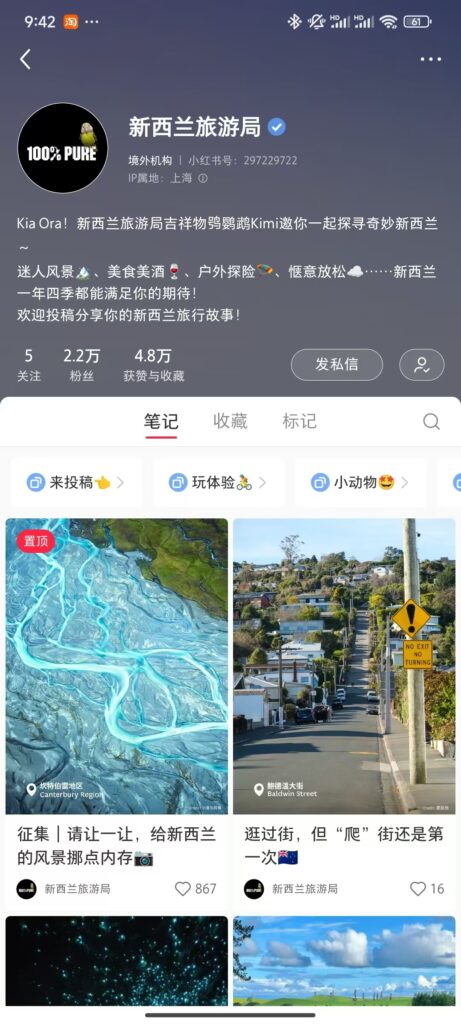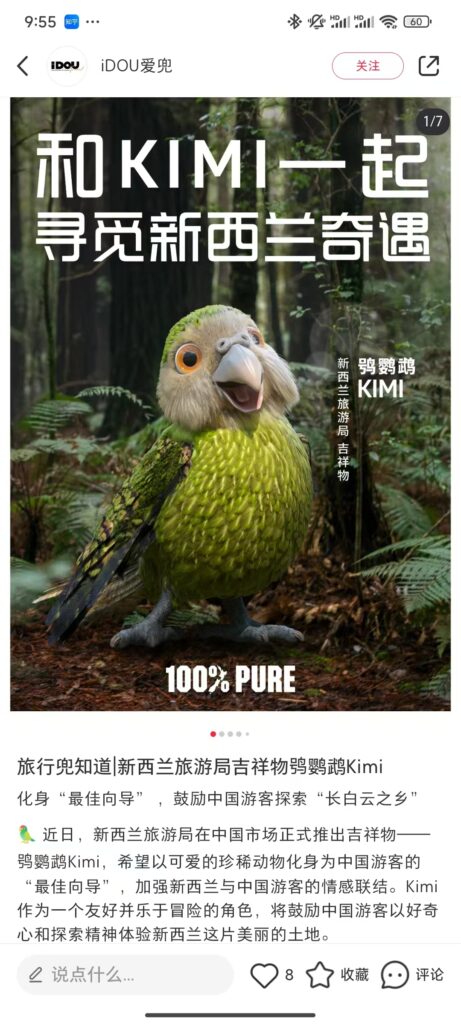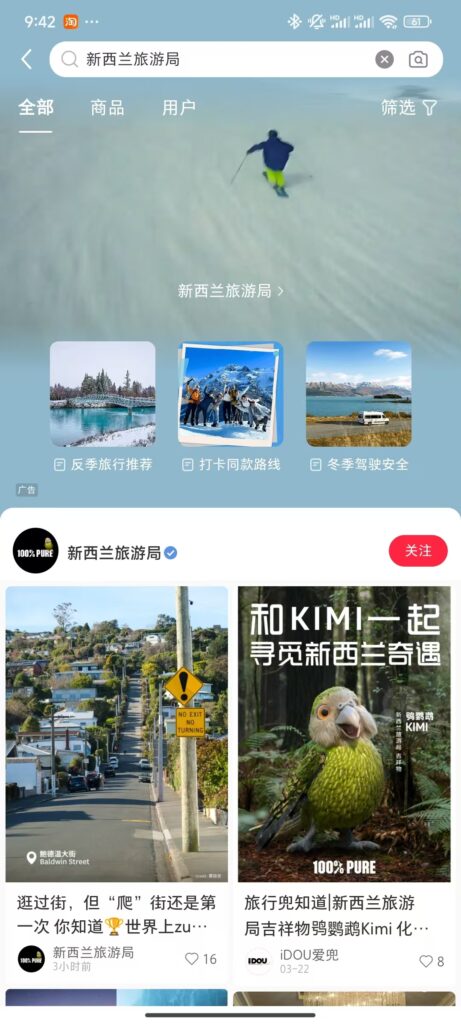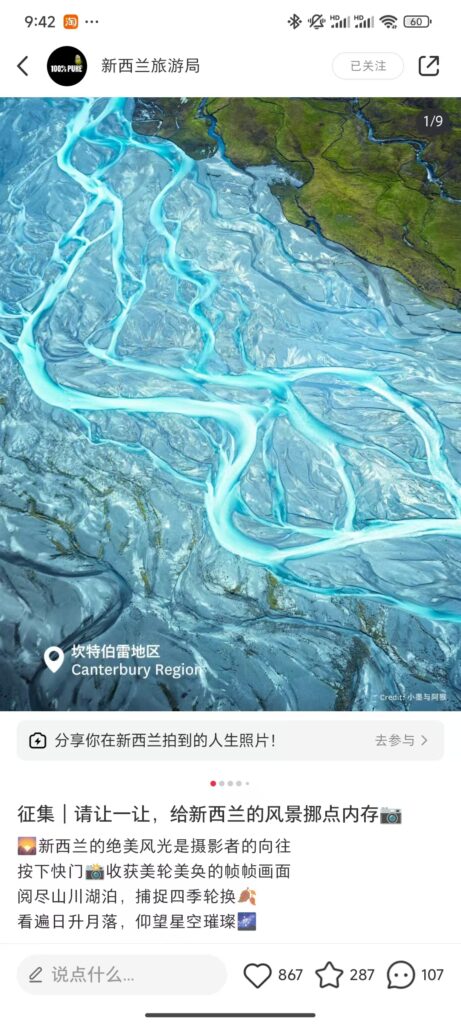In today’s digital landscape, social media platforms have become indispensable for brands seeking to reach and engage with their target audiences. Among them, Xiaohongshu (also known as RED), stands out as a vibrant content-sharing and social e-commerce platform, particularly for the travel industry. Deep Digital China delves into how overseas travel brands can effectively harness the power of Xiaohongshu to attract potential customers.

I. The introduction of Xiaohongshu
Firstly, Xiaohongshu, with its user base skewed towards young, urban, and affluent individuals, offers a unique opportunity for overseas travel brands to showcase their offerings in a visually appealing and engaging manner. The platform’s focus on authenticity, quality content, and community engagement aligns perfectly with the aspirations of travelers seeking inspiration and authentic experiences.
II. Platform Analysis
Xiaohongshu boasts a highly engaged user base that actively seeks out travel-related content. The platform’s diverse content formats, including high-quality images, videos, and live streams, provide brands with ample opportunities to showcase their products and services creatively. Furthermore, the platform’s community-driven nature fosters deep engagement and trust, making it an ideal environment for travel brands to connect with potential customers.
III. Defining Advertising Goals & Audience Targeting
A successful Xiaohongshu campaign starts with clear advertising goals and precise audience targeting. For instance, an overseas resort looking to increase bookings among young Chinese couples might set a goal to increase brand awareness and drive direct bookings through its Xiaohongshu page. By leveraging data analytics and market research, the brand can identify its target audience’s interests, behaviors, and preferences, enabling precise targeting and messaging.
IV. Content Strategy & Creation
Crafting compelling content is key to capturing users’ attention on Xiaohongshu. For instance, a renowned Indonesian resort launch a successful “Discover Bali” campaign by a renowned Indonesian resort. The brand partnered with influencers to create immersive video content showcasing the resort’s unique villas, beachfront views, and cultural experiences. This content not only showcased the resort’s offerings but also sparked viewers’ wanderlust, driving significant engagement and bookings.
To further enhance engagement, brands can incorporate interactive elements such as polls, quizzes, and user-generated content (UGC) challenges. For instance, a Japanese ski resort launched a #SkiWithMe hashtag challenge, inviting users to share their skiing experiences and tag the resort for a chance to win a free ski pass. This strategy not only increased brand exposure but also fostered a sense of community among its followers.

V. Advertising & Precision Targeting on Xiaohongshu
What’s more, Xiaohongshu’s advertising platform allows brands to precisely target their audiences based on demographics, interests, and behaviors. For example, an Australian adventure tour operator leveraged this feature to promote its unique wildlife safari tours to young, adventurous travelers in China. By using a combination of image and video ads, the brand effectively conveyed the thrill and excitement of its tours, resulting in a significant increase in website traffic and bookings.
VI. Data Monitoring & Optimization
Regularly monitoring ad performance and adjusting strategies based on data insights is crucial for maximizing ROI. A European cruise line continuously monitored its Xiaohongshu campaigns, paying close attention to metrics such as engagement rates, click-through rates, and conversions. Based on these insights, the brand refined its targeting parameters, optimized ad creatives, and launched new campaigns tailored to emerging trends and user preferences. This iterative approach helped the cruise line maintain a high level of engagement and drive continuous growth.
VII. Long-Term Relationship Building & Interaction
Building long-term relationships with users is essential for sustaining brand loyalty and engagement. One way to achieve this is by actively participating in the Xiaohongshu community. A French luxury hotel chain, for example, regularly engages with its followers by responding to comments, hosting Q&A sessions, and sharing behind-the-scenes content. This approach helps create a sense of intimacy and exclusivity, making users feel valued and connected to the brand.
VIII. Cross-Platform Integration & Omnichannel Strategy
Last but not least, to maximize reach and impact, overseas travel brands should integrate their Xiaohongshu campaigns with other marketing channels. For instance, a New Zealand adventure tour company leveraged its Xiaohongshu presence to drive traffic to its official website, where users could find more detailed information and book their tours. Additionally, the brand promoted its Xiaohongshu content across other social media platforms and travel booking sites, creating a seamless omnichannel experience for potential customers.
IX. The success of New Zealand Tourism Board on Xiaohongshu
New Zealand Tourism Board has leveraged innovative strategies to captivate the hearts and minds of travelers worldwide on Xiaohongshu.
Establishing a Strategic Partnership:
Firstly, the New Zealand Tourism Board announced a strategic partnership with Xiaohongshu in June 2023, aiming to deepen cooperation in tourism promotion. This partnership underscores the board’s commitment to leveraging Xiaohongshu’s platform to reach and inspire Chinese travelers.

Leveraging Influential Content Creators:
Secondly, by partnering with renowned travel bloggers and content creators on Xiaohongshu, the board showcases New Zealand’s unique charm through authentic and captivating content. These creators embark on immersive trips, sharing their experiences and discoveries, thereby inspiring potential visitors.

Strong advertising campaigns:
Thirdly, the New Zealand Tourism Board effectively engaged users and grew its fan base through the adoption of the advertising strategy on the Xiaohongshu platform, including Brandzone. They Leveraged the platform’s data analytics tools, they meticulously targeted their audience. By analyzing users’ interests, behavior patterns, geographical locations, and other information, they precisely delivered advertisements to those with a vested interest in travel, natural scenery, cultural experiences, and related content. This targeted approach ensured effective reach of the advertisements, heightening user engagement and conversion rates.

Curating Seasonal and Experiential Content:
Fouth, recognizing the demand for off-season and experiential travel, the board launched initiatives such as the “Anti-Season New Zealand” campaign in collaboration with Xiaohongshu. This campaign highlights New Zealand’s winter adventures, including stargazing, glacier trekking, wildlife encounters, and adrenaline-pumping sports, inviting users to explore the country’s lesser-known wonders.
Emphasizing Cultural Immersion and Māori Hospitality:
Fifth, the board emphasizes the importance of cultural immersion, particularly the Māori concept of manaakitanga (hospitality), encouraging visitors to engage with local traditions and customs. This enhances the travel experience, making it more meaningful and memorable for Chinese travelers.
Encouraging User-Generated Content on Xiaohongshu:
Moreover, through hashtags, challenges, and other interactive mechanisms, the board fosters a community of Xiaohongshu users who share their own New Zealand travel stories. This user-generated content not only showcases the destination’s diversity but also builds social proof and credibility among potential travelers.

Data-Driven Marketing Insights:
Leveraging Xiaohongshu’s data analytics capabilities, the board gains insights into user preferences and behaviors, enabling them to tailor their marketing efforts for maximum impact. This data-driven approach ensures that content is tailored to the interests and needs of Chinese travelers.
Cross-Platform Promotion:
What’s more, the board’s marketing strategy extends beyond Xiaohongshu, incorporating other social media platforms and digital channels to amplify its message. This multi-channel approach ensures that New Zealand’s tourism offerings reach a wider audience across different platforms.
High-Level Engagement and Government Support:
Last but not least, the involvement of high-profile individuals, such as the New Zealand Prime Minister, at events and promotional activities underscores the government’s commitment to promoting tourism. This high-level engagement adds credibility and momentum to the partnership, further enticing Chinese travelers to explore New Zealand.
In conclusion, Xiaohongshu presents a powerful opportunity for overseas travel brands to connect with potential customers and drive growth. By leveraging the platform’s unique features, creating compelling content, and implementing a data-driven strategy, brands can effectively capture the attention of young, affluent travelers and foster lasting relationships. As Xiaohongshu continues to evolve and expand its user base, travel brands should stay agile and adapt their strategies to stay ahead of the curve.

